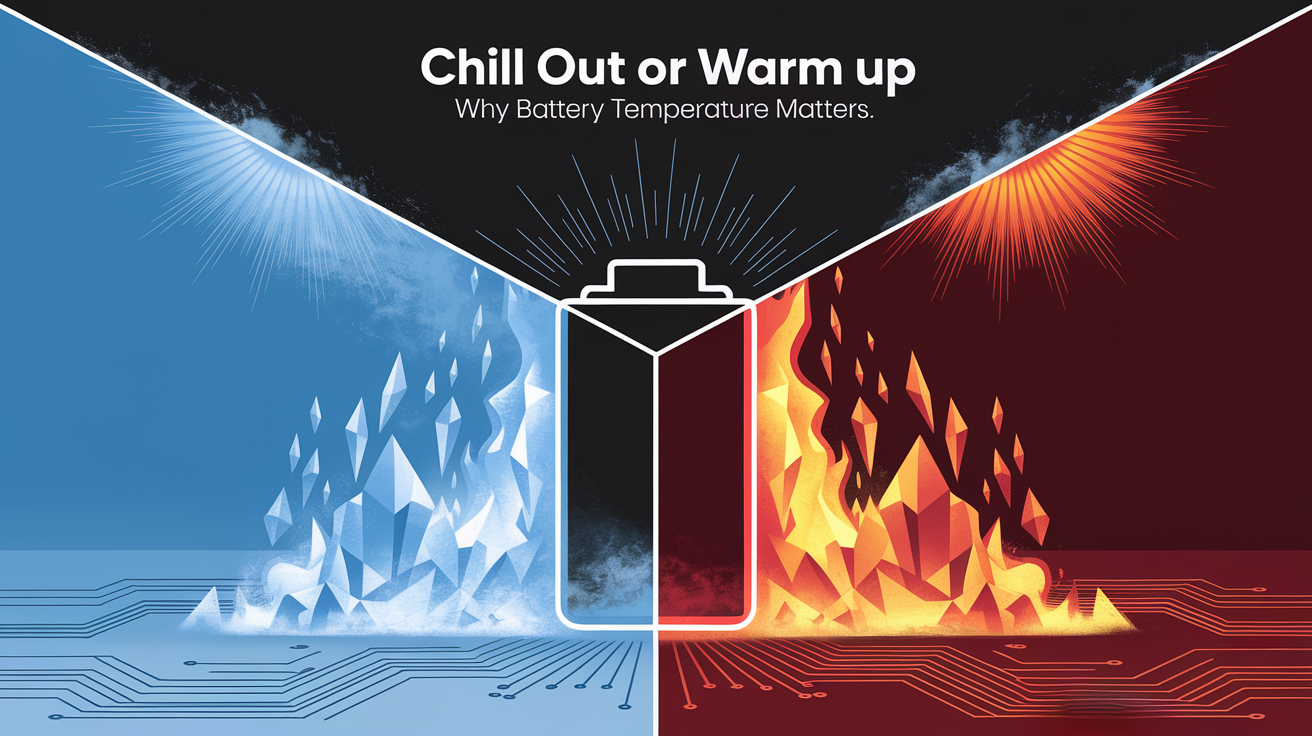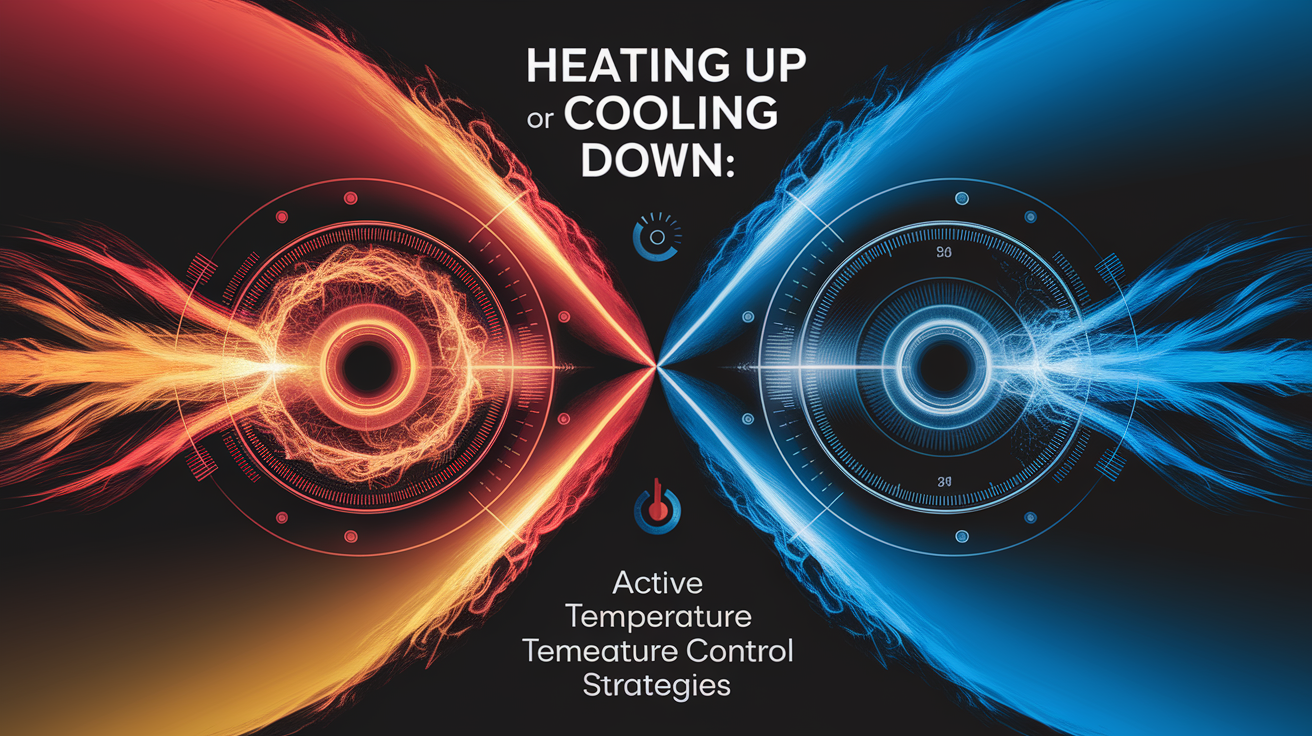Cool & Hot: Mastering Battery Bank Temperature Control
Chill Out or Warm Up: Why Battery Temperature Matters
In any high-performance energy storage system (ESS), the Battery Bank is the core asset. Protecting this investment goes beyond simple charge and discharge management; it demands precise temperature control. Temperature is one of the most significant factors influencing a battery’s performance, safety, and longevity. Operating a battery outside its designated thermal window directly impacts its chemical stability. High temperatures accelerate the degradation of internal components, permanently reducing battery capacity and shortening its useful life. In a worst-case scenario, especially with a Lithium-ion Battery, excessive heat can lead to thermal runaway—a dangerous and self-perpetuating cycle of rising temperature that can result in fire or explosion. Conversely, cold weather battery performance suffers dramatically, as low temperatures slow down the electrochemical reactions, reducing available power and inhibiting charging efficiency. Effectively managing your battery bank’s temperature is not an optional luxury; it is a critical operational requirement for ensuring reliability, safety, and a positive return on investment.

Finding the Sweet Spot: Ideal Temperature Range
Every battery chemistry has an optimal operating temperature range where it delivers peak performance and exhibits the slowest rate of degradation. For most modern battery banks, particularly those using lithium-ion technologies, this ideal “Goldilocks Zone” is surprisingly narrow. The sweet spot generally lies between 15°C and 35°C (60°F to 95°F). Operating consistently within this range is the single most effective strategy for maximizing the Battery State of Health (SOH) over thousands of cycles.

- Lithium-ion Battery: Thrives in a controlled environment, typically 15°C to 35°C. Exceeding this range significantly accelerates capacity fade, while charging below freezing (0°C or 32°F) can cause irreversible plating on the anode, posing a serious safety risk.
- Lead-Acid Battery: While more tolerant of temperature swings than lithium-ion, the best battery bank temperature for lead-acid is around 25°C (77°F). For every 10°C increase above this point, the battery’s lifespan can be cut in half.
Maintaining a stable temperature across all cells within a pack is equally important. A temperature differential of more than 5°C between cells can lead to imbalances, causing the entire pack to underperform and degrade prematurely. A robust battery thermal management system is essential to keep the entire bank operating uniformly within this optimal window.
Keeping Score: Monitoring Your Battery Bank Temperature
You cannot manage what you do not measure. The foundation of any effective temperature control strategy is accurate, real-time monitoring. This function is a core responsibility of a modern Battery Management System (BMS). A sophisticated BMS is far more than an overcharge protection device; it is the brain of the battery bank, continuously tracking critical parameters. Integrated Temperature Sensor probes, strategically placed throughout the battery pack, feed constant data to the BMS. This allows the system to:

- Track Real-Time Temperatures: Provides an immediate and accurate reading of the battery’s internal and surface temperatures.
- Identify Hotspots: Detects uneven temperature distribution across cells, which can indicate developing faults or imbalanced loads.
- Trigger Protective Actions: A BMS with temperature control can automatically disable charging if temperatures are too low or too high and can activate the cooling or heating systems as needed.
- Log Data for Analysis: Historical temperature data helps diagnose performance issues and assess the overall health of the battery bank over time.
For any serious Off-grid System or RV Battery Bank, a BMS with comprehensive thermal monitoring is non-negotiable. It provides the critical intelligence needed to automate and optimize the entire thermal management process.
Heating Up or Cooling Down: Active Temperature Control Strategies
Once you are monitoring temperature, the next step is active control. A Thermal Management System (TMS) employs specific strategies to add or remove heat, ensuring the battery bank remains in its optimal zone regardless of ambient temperature. These systems can be categorized into passive, active, and hybrid solutions.

- Passive Cooling: This is the simplest approach, relying on conduction and convection to dissipate heat. Methods include using heat sinks with large surface areas, thermally conductive materials to draw heat away from cells, and strategic battery ventilation within a well-designed Battery Enclosure. While cost-effective, passive cooling is often insufficient for high-power applications or hot climates where you need to know how to keep a battery bank cool in summer.
- Active Cooling: For more demanding environments, active cooling systems use energy to forcefully move heat. Common solutions involve fans to circulate air or, in more advanced systems, liquid coolant pumped through channels integrated into the battery pack. This is the technology used in electric vehicles to maintain battery performance during fast charging. For stationary storage, a DIY battery bank cooling system could involve thermostatically controlled fans.
- Heating Systems: Managing a solar battery bank temperature in winter poses the opposite challenge. Can a battery bank get too cold? Absolutely. To address this, cold weather battery bank heating solutions are essential. These typically involve resistive heating pads or elements integrated into the battery enclosure, which are activated by the BMS when the temperature drops near freezing to ensure safe charging and optimal performance.
Advanced hybrid systems integrate multiple strategies, using passive methods when possible and engaging active heating or cooling only when necessary. This multi-loop approach, as detailed in systems engineered for electric vehicles by companies like Modine, offers the most efficient and robust form of temperature control, intelligently adapting to any operational scenario.
Wrap-Up: Keeping Your Battery Bank in the Goldilocks Zone
Mastering battery bank temperature is not about avoiding extremes; it’s about maintaining precise stability. Investing in a comprehensive Thermal Management System—complete with accurate monitoring and active heating and cooling—is the most effective way to protect your battery assets. This proactive approach directly translates to a longer lifespan, consistent performance, enhanced safety, and ultimately, a greater return on your energy storage investment. By keeping your battery bank in its “Goldilocks Zone,” you ensure it operates at peak efficiency for years to come.







